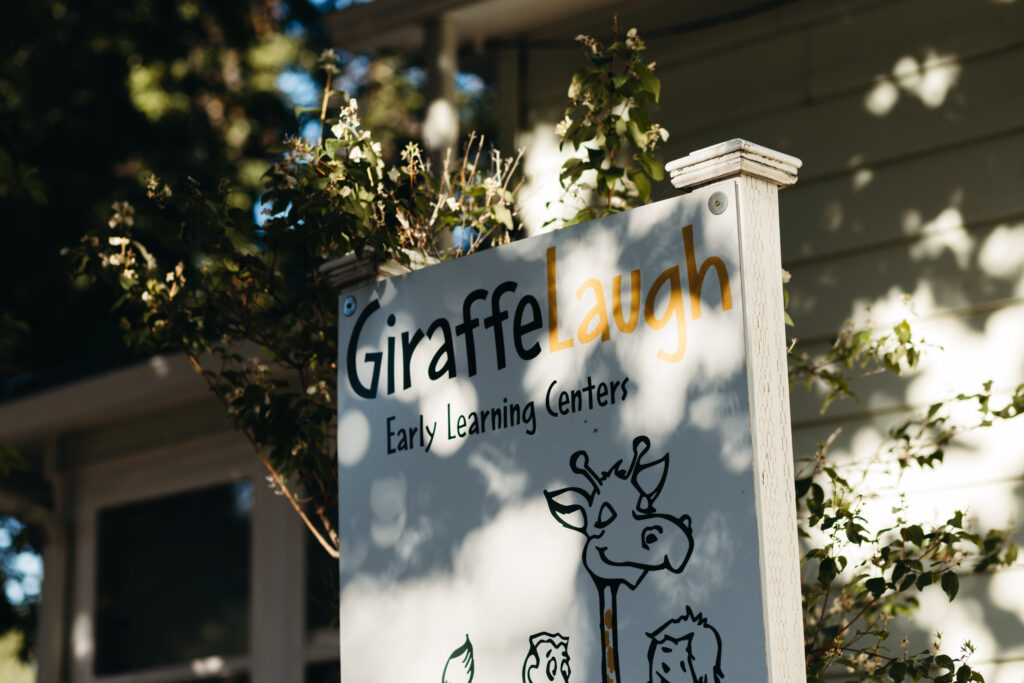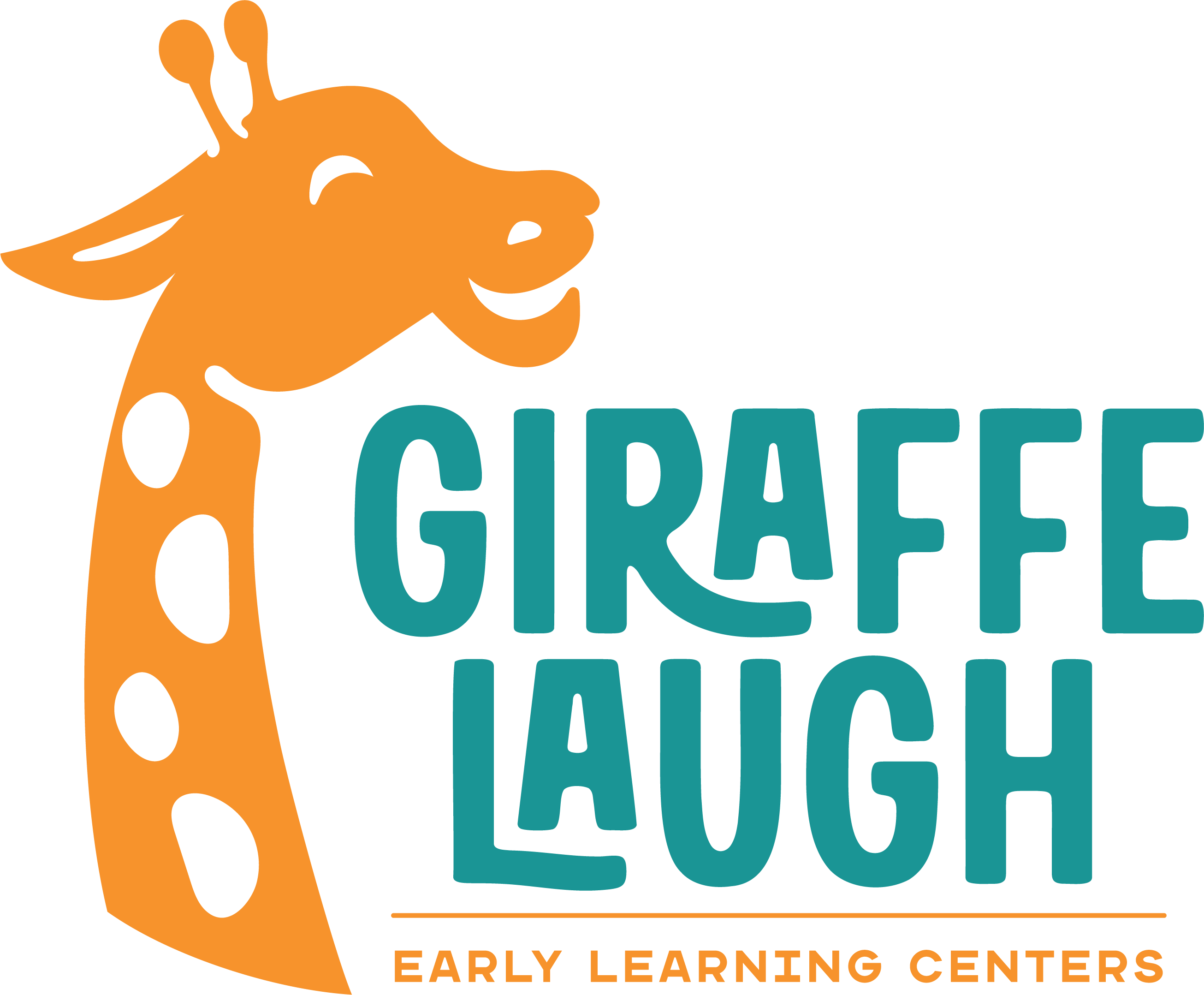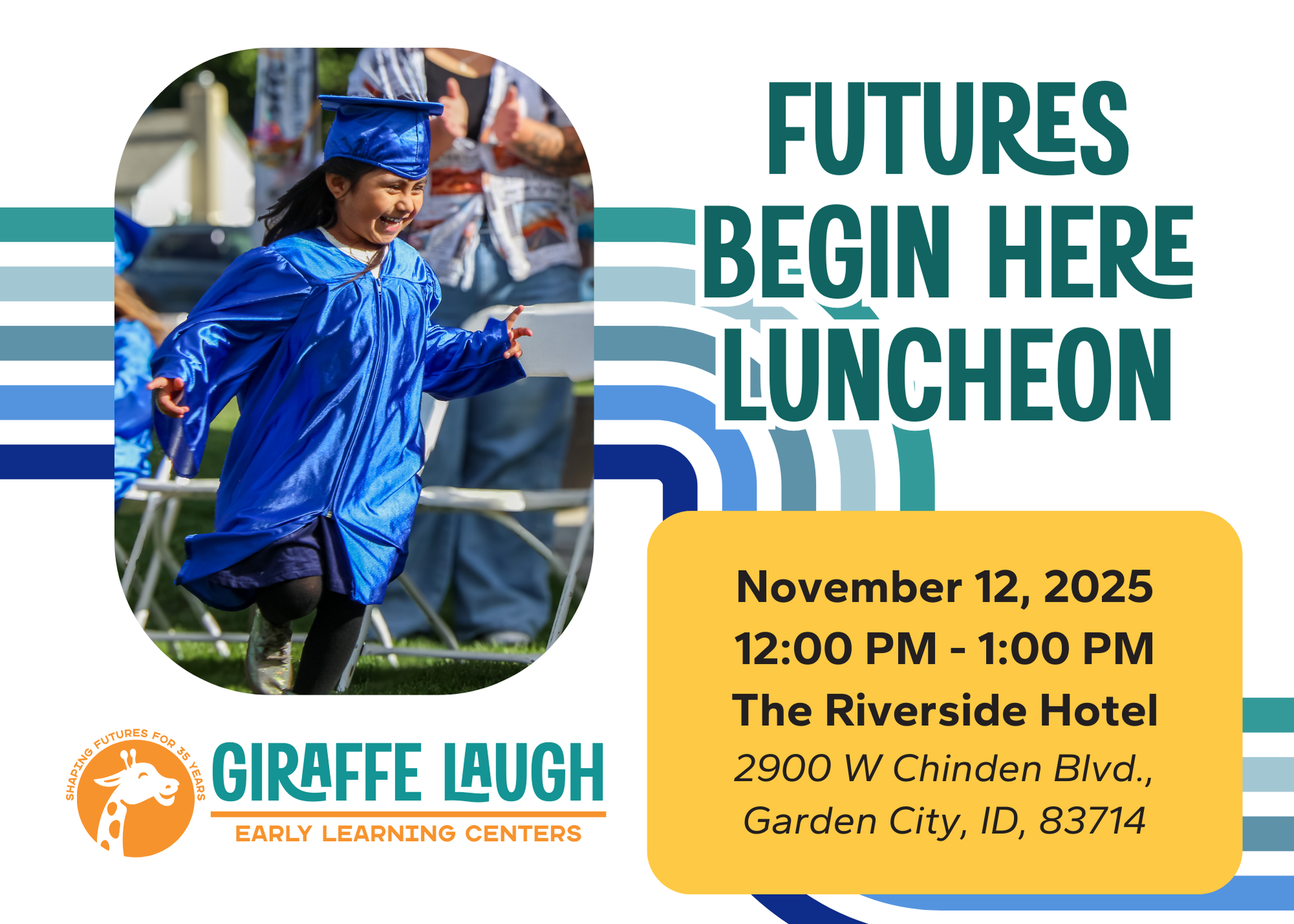⏱️ 5-7 minute read
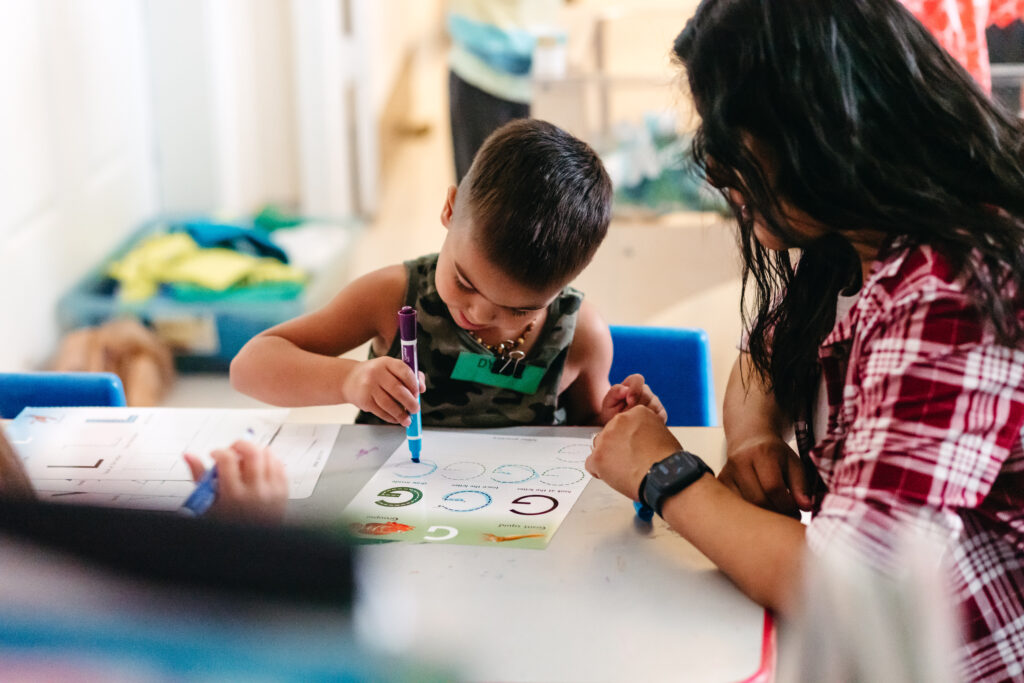
Summer flies by, doesn’t it? One minute you’re chasing bubbles in the backyard, and the next thing you know, those big yellow buses are back on the road.
While the older kids head off to school, you may be wondering:
What about the little ones? Are they getting ready, too?
The answer is YES! Just not in the way you might think.
What Does “School Ready” Really Mean?
It’s not just about ABCs or counting to 100. True readiness is about helping your child feel secure, capable, and excited to learn in school and in life.
To understand what this looks like for children ages 0–5, we spoke with two Giraffe Laugh Site Directors: Ms. Shellee (Grand Avenue location) and Ms. Beverly (Franklin location).
Their insight? School readiness is not perfection. It is a foundation.
“Every child develops at their own pace,” says Shellee. “Readiness is about having a strong foundation, not mastering every skill at once. With that foundation, all the skills will come.”
Beverly adds:
“A lot of people focus on the academics—and that’s important—but self-regulation is huge. If you can’t self-regulate, you can’t get your learn on.”
At Giraffe Laugh, we focus on six key areas that support this foundation:
- Social & Emotional: Managing feelings, building friendships, showing empathy
- Communication & Language: Talking, listening, asking questions
- Literacy: Reading, recognizing letters, enjoying stories
Math & Thinking Skills: Counting, sorting, problem-solving - Physical Development: Coordination, movement, and fine motor skills
- Self-Help & Independence: Dressing, handwashing, cleaning up
“When children move on to bigger classrooms,” Beverly notes, “those skills carry them. Being able to say, ‘I’m overwhelmed,’ or, ‘You’re in my bubble,’ gives them tools to navigate that space.”
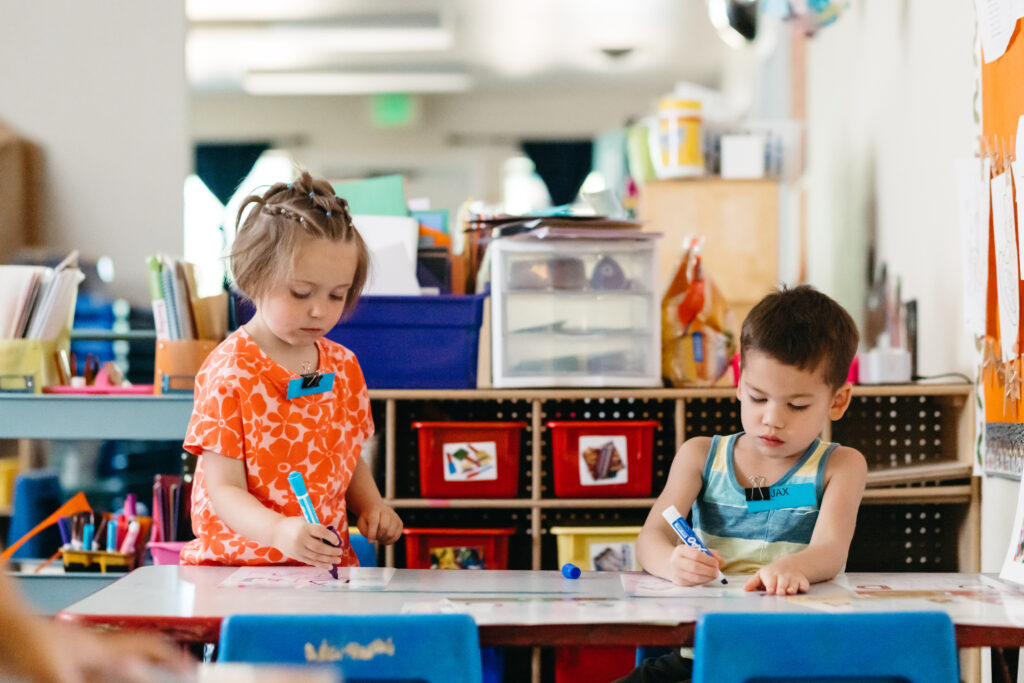
10 Easy Ways to Build School Readiness
Most of what your child needs comes from you: your time, patience, and everyday love. These simple activities support all six readiness areas and fit seamlessly into daily life.
1. talk About Their Day
Ask: “What made you smile today?” or “Was anything tricky?”
→ Builds: Communication & Language, Social & Emotional
✨ Helps kids process experiences, expand vocabulary, and feel heard.
Asking simple questions gives children the chance to share. These conversations help kids process experiences, expand vocabulary, and build emotional security. What matters most is listening. Kids feel seen and supported when their thoughts are valued.
2. Make Storytime Interactive
Pause to ask: “What do you think will happen next?”
→ Builds: Literacy, Cognitive Skills
✨ Encourages curiosity, imagination, and empathy.
Pausing during a story to ask questions like “What do you think will happen next?” turns reading into an adventure. When storytime becomes a two-way conversation, children’s curiosity, imagination, and empathy grow right alongside their early literacy skills. The same is true when we invite them to share about their day. Reflecting on highs and lows helps children process experiences, build language, and feel confident knowing their voice matters.
3. Offer Simple Choices
Ask: “Red cup or blue one?” “Crackers or apple slices?”
→ Builds: Independence, Thinking Skills
✨ Strengthens decision-making and fosters confidence.
Small decisions can be big confidence builders. Choices help children feel respected, develop independence, and learn the give-and-take of decision-making. When children practice making choices in safe, everyday moments, they’re better prepared for bigger decisions later.
4. Practice Calming Strategies Together
Actions: Try deep breaths, blowing out pretend candles, or hand-on-belly breathing.
→ Builds: Social & Emotional
✨ Teaches tools for handling big feelings.
Big feelings are a natural part of growing up, and children need practice to learn how to manage them. Simple strategies like taking deep breaths, blowing out pretend candles, or placing a hand on the belly give kids tools to calm themselves. When adults model these practices and join in, children begin to self-regulate in healthy, lasting ways.
5. let them help! Involve Them in Daily Routines
Actions: Sorting socks, stirring pancake batter, packing lunch.
→ Builds: Fine Motor Skills, Independence
✨ Everyday tasks = coordination, responsibility, and pride.
Sorting socks, stirring pancake batter, or watering plants may take longer, but these everyday tasks are powerful learning moments. Involving children in routines builds coordination, independence, and responsibility while giving them the joy and pride that comes from knowing they are contributing.
6. Encourage Pretend Play
Doctor’s office, grocery store, or a made-up world.
→ Builds: Social Skills, Language
✨ Supports problem-solving, role play, and emotional growth.
Imagination is where children try on the world. When they act out being a doctor, parent, or cashier, they’re practicing real-life problem-solving and learning how social interactions work. Pretend play also strengthens language skills as children create dialogue and negotiate roles. These moments may look like simple fun, but they are practice runs for communication, cooperation, and creativity.
7. Sing Songs and Rhymes
“Itsy Bitsy Spider,” “Wheels on the Bus.”
→ Builds: Language, Literacy
✨ Songs teach rhythm, repetition, and soothe transitions.
Songs and rhymes are powerful because they naturally combine rhythm, repetition, and movement, which are all key elements in early learning. Singing supports memory and language development while also teaching patterns and sequencing. Simple songs also make transitions easier, like moving from playtime to cleanup, because the rhythm signals what comes next. For young children, music is both soothing and instructive.
8. Go on a Sensory Walk
Find something bumpy, noisy, or green.
→ Builds: Cognitive, Physical Development
✨ Boosts observation, vocabulary, and movement.
Engaging the senses sharpens a child’s awareness of the world. Looking for things that are rough, smooth, noisy, or colorful encourages children to observe details and describe them in words. This builds vocabulary and cognitive skills while also getting kids moving. A sensory walk can happen anywhere—around the block, in a backyard, or even indoors—and it helps children connect language to their environment in a very tangible way.
9. Create a Creative Corner
Provide crayons, paper, glue, or recycled boxes.
→ Builds: Fine Motor, Literacy
✨ Prepares little hands for writing and sparks self-expression.
A dedicated space with crayons, markers, paper, glue, or recycled boxes allows children to explore ideas without limits. These activities strengthen fine motor skills, which are essential for writing and self-care tasks like buttoning or tying shoes. Creative projects also give children the chance to plan, problem-solve, and carry out their own ideas from start to finish. It’s less about producing something perfect and more about practicing the skills that build independence and self-expression.
10. Celebrate Self-Expression
Let them choose their outfit—even if it’s mismatched.
→ Builds: Independence, Social & Emotional
✨ Builds confidence, identity, and pride in uniqueness.
Allowing children to make choices about how they present themselves—like picking outfits or hairstyles—builds decision-making and independence. Even when the choices are unconventional, children learn confidence and self-awareness through them. Supporting self-expression also helps children understand that their individuality is valued, which lays the foundation for strong self-esteem and resilience as they grow.
You are Already Building the Foundation
As Shellee reminded us, readiness isn’t about doing everything at once—it’s about the small things, over time.
And as Beverly said, it’s more than letters or numbers—it’s about helping your child learn how to be in the world: how to ask for help, express feelings, and be part of a community.
Every moment you show up for your child, you’re giving them exactly what they need.
You’ve got this. 💛
📥 Don’t Miss This: Download Your School Readiness Checklist
Ready to turn everyday moments into learning opportunities?
Grab our free, colorful one-page checklist—packed with all these tips plus even more fun, practical ways to help your little one get ready for school.
Giraffe Laugh is Here for Your Family
At Giraffe Laugh, we are more than childcare, we are your partner in your child’s future. As a local nonprofit, our mission is to ensure every child in our community has access to quality early education, no matter their background.
Now enrolling at all five locations across the Treasure Valley!
Fill out our enrollment contact form today, and a Site Director will connect with you soon.
👉🏼 Learn how you can qualify for tuition assistance here!
